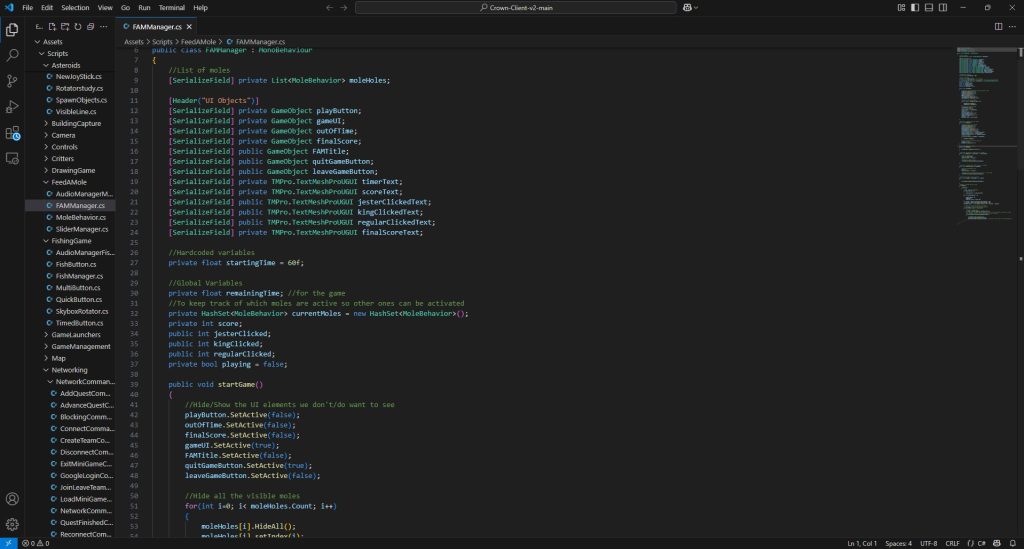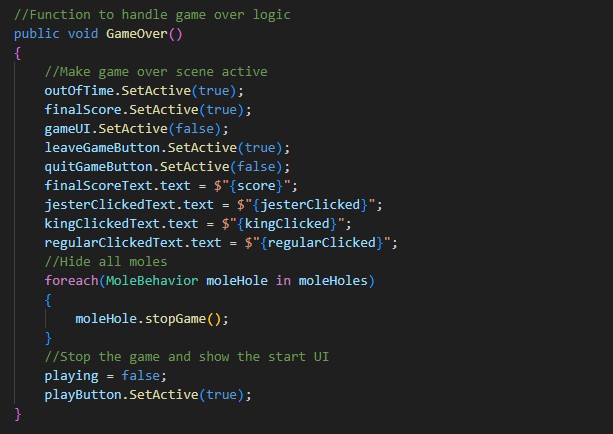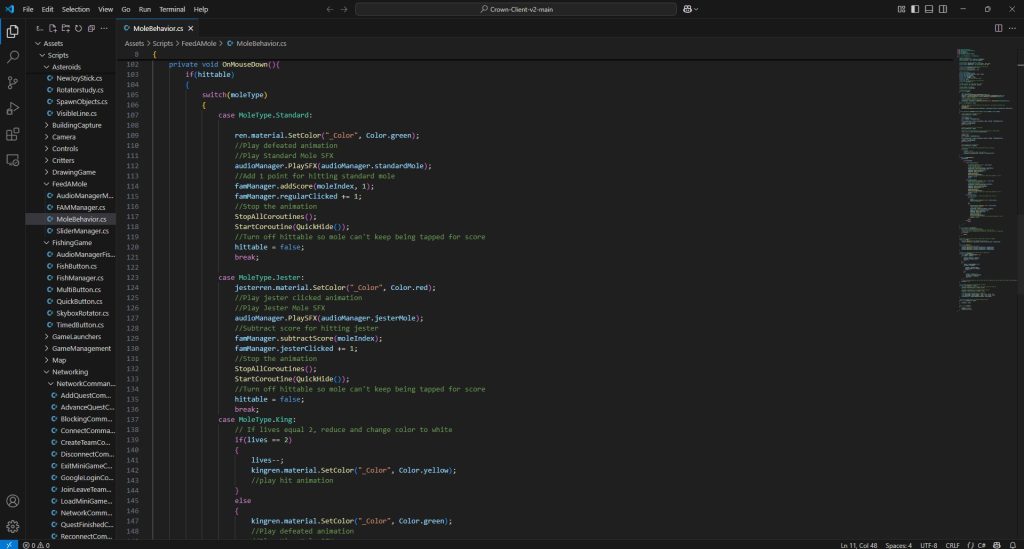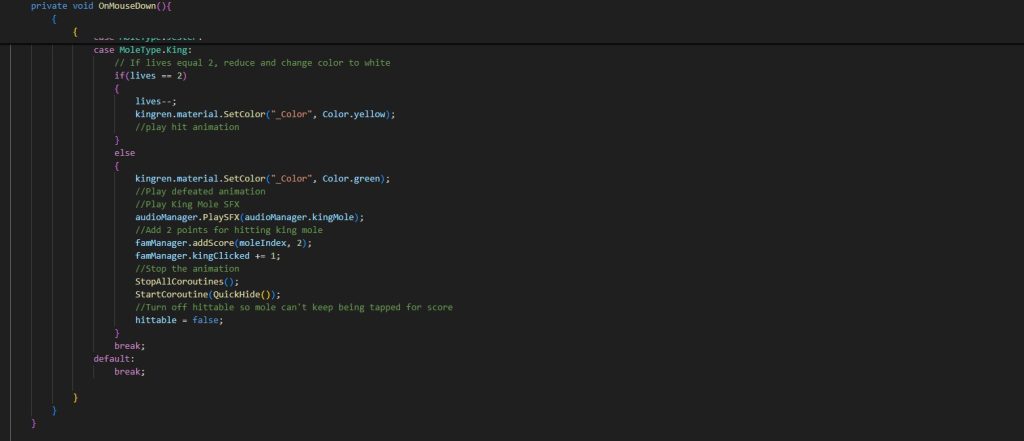Monarch Odyssey is a video game currently in development that I helped to develop during my GAME 450 class. I served as a member of the programming team and through six different two week sprints, I helped to add many changes and make the game into what it is today, working with the other members of my team, other teams, and the team leads to ensure our vision for the game came to fruition. Below is a collection of the work I performed and how it affected the current state of the game.
Sprint One
The first sprint was mostly focused on understanding the in’s and out’s of Monarch Odyssey and getting to know the other members of the programming team. We focused on reading documentation of past members of the team and worked together to determine what we wanted to focus on. We decided to focus on fixing the various bugs in the current version of the game and leave the large changes for future sprints.
Microsoft Teams Screenshot of Sprint One Tickets

Sprint Two
The Second sprint was more focused on bug fixes and documentation, as I was tasked with sorting the currently existing files in Microsoft Teams and fixing a small bug in the Fishing Minigame. The Fishing Game had quick time events that were too quick to reasonably complete, so I changed the random number generator within the code to generate a larger number. This made the game’s quick time events possible to complete. I sorted the files by a few different categories which were “Cheat Sheets and Tutorials”, “Game Design Documents”, and “Minigame Files and Information”.
Reorganized Files

Fixed Fishing Game Bug
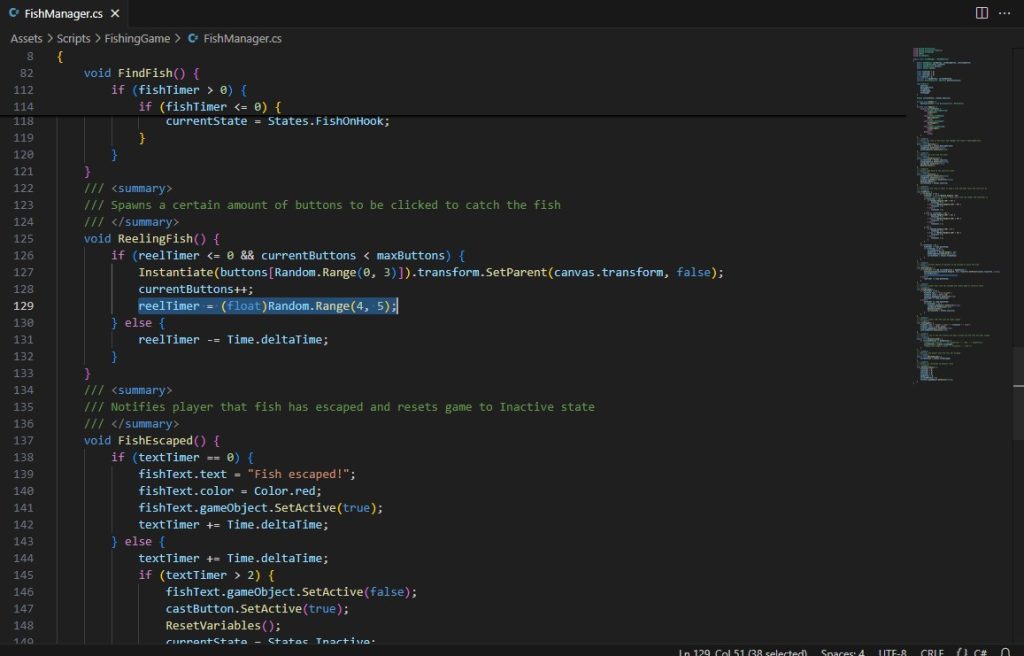
Sprint Three
Sprint Three had me focus on adding new models to “Feed-A-Mole”, as well as fixing an issue with the “Stacking Minigame”. The Stacking Minigame tasked the player with trying to catch objects as they were falling, but there was a bug where the objects would spawn out of bounds of the camera. I fixed this by changing the Y-axis range where the objects could spawn to be smaller, which allowed the game to be completed properly. “Feed-A-Mole” is a game similar to “Whack-A-Mole” which, at the time, just had 3D-cylanders as placeholders. I added the new models and made sure they worked properly, making the game more aesthetically appealing.
Stacking Game Fix

Mole Models
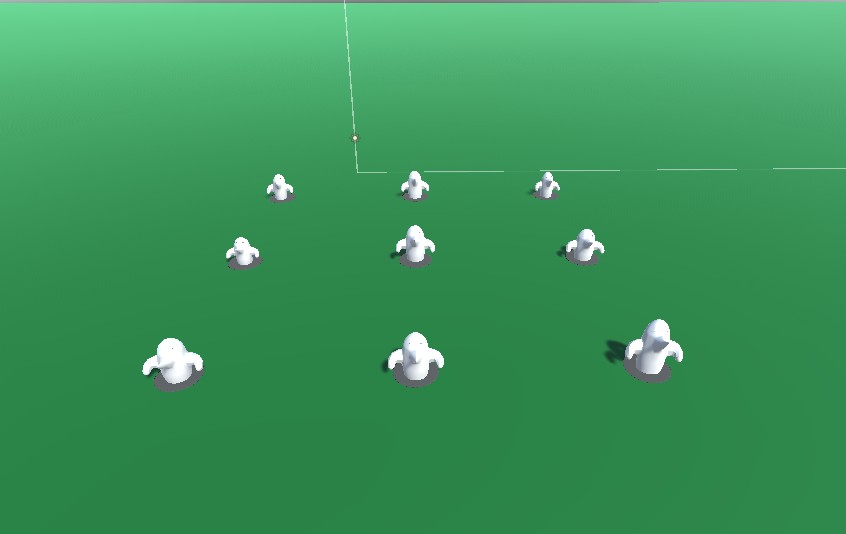
Sprint Four
Sprint Four had me focus on making the “Feed-A-Mole” minigame more appealing in both the visual and auditory departments. I was tasked with adding set decorations to the minigame as well as making working sound effects that would play when certain actions were taken. The various visual assets were objects like rocks and grass that were made by the 3D modeling team and implemented by myself. The sound effects were made by the the sound team and I added code to make them play when the player clicked certain moles in order to convey what had been clicked, while the background music would play as the game was played.
Set Decoration
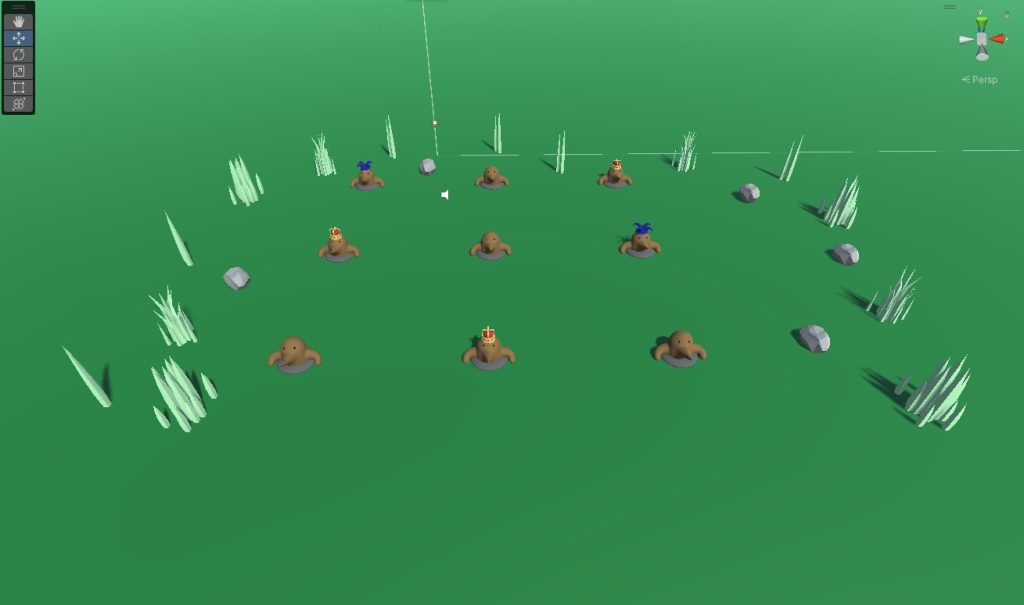
Audio Effects Code
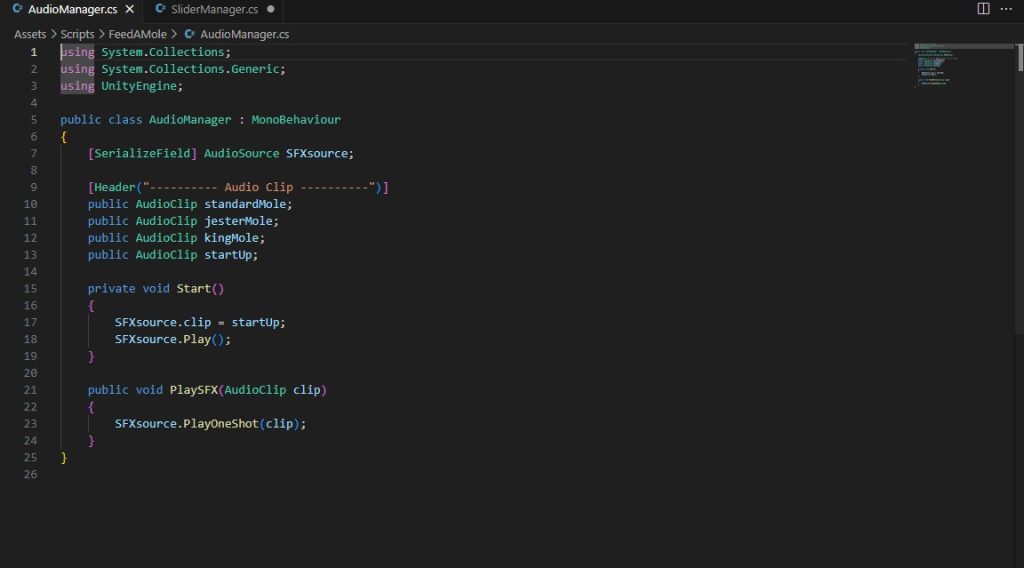
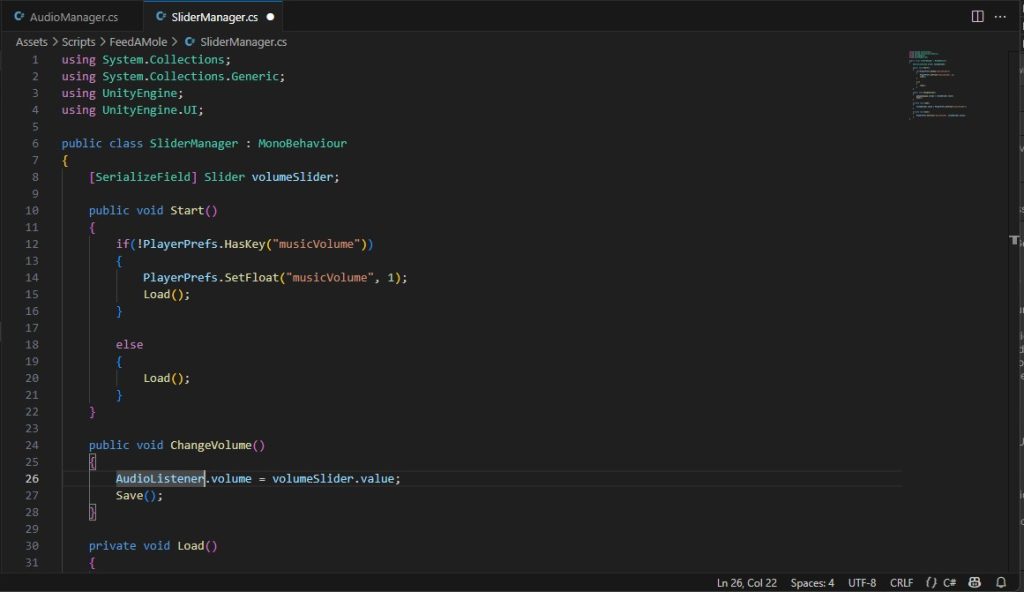
Sprint Five
Sprint Five saw my focus change to the “Fishing Minigame”, where I added the new Fishing Rod model provided by the 3D modeling team and added sound effects to the game. The new Fishing Rod was changed from a simple placeholder to a new model, which had animations and a more aesthetically-pleasing design overall. The new sound effects would happen when a player would do certain actions like cast their line or catch a fish, and the background music would play throughout the game.
New Fishing Rod Model
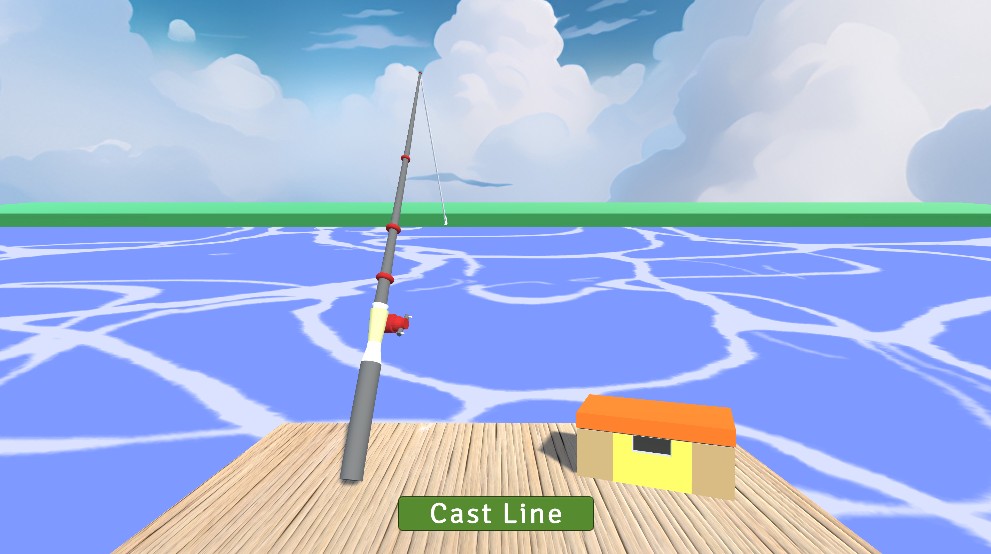
Fishing Game Sound Effects

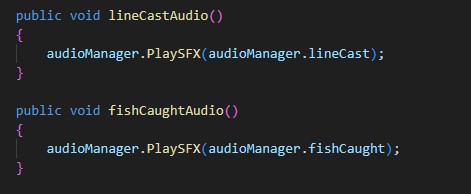


Sprint Six
Sprint Six was the final sprint and saw my focus shift back to the “Feed-A-Mole” minigame, where I was tasked with adding the new UI for the game, provided by the 2D UI team. The new UI gave instructions on how the game worked when the game was started, had a new timer as the game played, and would show the player how many moles they had clicked of each type at the end of the game.
New UI
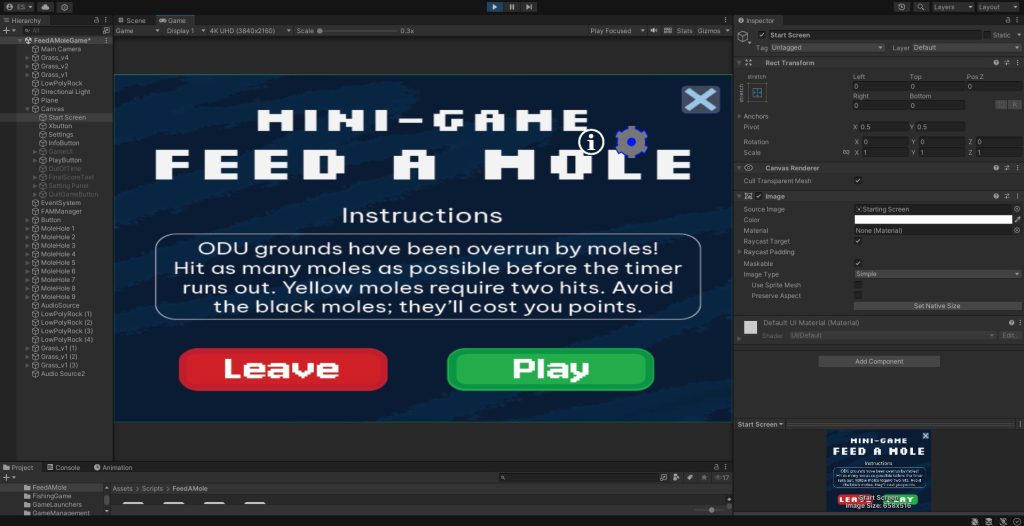

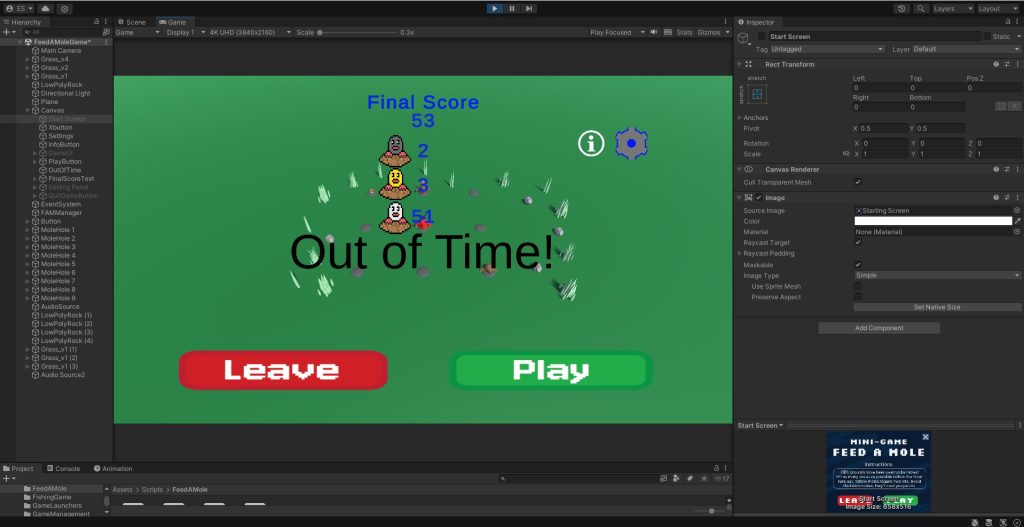
Code for UI
